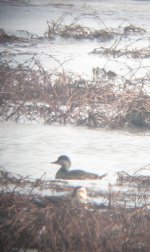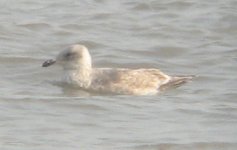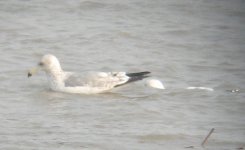-
Welcome to BirdForum, the internet's largest birding community with thousands of members from all over the world. The forums are dedicated to wild birds, birding, binoculars and equipment and all that goes with it.
Please register for an account to take part in the discussions in the forum, post your pictures in the gallery and more.
You are using an out of date browser. It may not display this or other websites correctly.
You should upgrade or use an alternative browser.
You should upgrade or use an alternative browser.
China observations (4 Viewers)
- Thread starter Gretchen
- Start date
More options
Who Replied?firstreesjohn
Well-known member
Those photos !
I am here, salivating over your Waxwings et al.
I'm not really a jealous person, but I can feel little pangs coming on !
Heartiest congrats on your good fortune.
I am here, salivating over your Waxwings et al.
I'm not really a jealous person, but I can feel little pangs coming on !
Heartiest congrats on your good fortune.
Terry Townshend
Regular vagrant
Yeyahu, 18 Dec 2010
A day-trip to Yeyahu (Wild Duck Lake) near Beijing on Saturday with Brian Jones and Spike Millington produced 1 imm White-tailed Eagle, 3-4 Upland Buzzards (including one very confiding juvenile), an adult Rough-legged Buzzard, Eagle Owl, 1 Hooded Crane (among 350-400 Common Cranes), 1 Saker, 2 Hen Harriers, 12 Japanese Quail, 15-20 Chinese Penduline Tits, 300+ Pallas's Reed Buntings, Yellow-throated Bunting, Little Bunting, Meadow Bunting, and good numbers of Larks - Asian Short-toed and Skylark - with 150+ Lapland Buntings mixed in. Some photos below. More on my blog.
No sign of any Mongolian Larks, Pallas's Sandgrouse or Great Bustards yet.
A day-trip to Yeyahu (Wild Duck Lake) near Beijing on Saturday with Brian Jones and Spike Millington produced 1 imm White-tailed Eagle, 3-4 Upland Buzzards (including one very confiding juvenile), an adult Rough-legged Buzzard, Eagle Owl, 1 Hooded Crane (among 350-400 Common Cranes), 1 Saker, 2 Hen Harriers, 12 Japanese Quail, 15-20 Chinese Penduline Tits, 300+ Pallas's Reed Buntings, Yellow-throated Bunting, Little Bunting, Meadow Bunting, and good numbers of Larks - Asian Short-toed and Skylark - with 150+ Lapland Buntings mixed in. Some photos below. More on my blog.
No sign of any Mongolian Larks, Pallas's Sandgrouse or Great Bustards yet.
Attachments
thrush
Craig Brelsford (大山雀)
A day-trip to Yeyahu (Wild Duck Lake) near Beijing on Saturday . . .
Good work out there, Terry. Really a big haul.
mcaribou
Migration coming
snow goose in Yancheng
one Snow Goose was seen in Yancheng NR on 27 Dec.Then I went there and found it with other two hybrid???
The one on the right is a normal Bean.The two in the middle basically look like Bean,but show more white on face/neck/breast.Colors of bill/leg fit Snow more than Bean.
When we tried to get close for a better photo,the four flew away.While the other Bean were not so alert and went on feeding.We saw the Snow flying back into Bean flock,but not sure if the other three flew with him so we just guess they were a family:eek!:
Does anybody know this kind of hybrid?
one Snow Goose was seen in Yancheng NR on 27 Dec.Then I went there and found it with other two hybrid???
The one on the right is a normal Bean.The two in the middle basically look like Bean,but show more white on face/neck/breast.Colors of bill/leg fit Snow more than Bean.
When we tried to get close for a better photo,the four flew away.While the other Bean were not so alert and went on feeding.We saw the Snow flying back into Bean flock,but not sure if the other three flew with him so we just guess they were a family:eek!:
Does anybody know this kind of hybrid?
Attachments
Last edited:
mcaribou
Migration coming
I went yesterday for the Black Scoter,a new record for Shanghai.Besides the scoter and Pallas's Gull which were reported on 2 Jan by Peter Salmon,a Swedish,I also saw a Slaty-backed Gull.
And Peter reported an adult Mongolian Gull with wingtag AF71 also on 2 Jan.
And Peter reported an adult Mongolian Gull with wingtag AF71 also on 2 Jan.
Attachments
rockfowl
Mark Andrews
Some great birds Mcaribou - especially the Snow Goose!
Cheers
Mike
Agree, some surprises there, good stuff!
mcaribou
Migration coming
reply from Nial Moores of Birds Korea
We do indeed have several piebald grey geese that appear to be hybrids
each winter. Most seem attributable to hybrid Greater White-fronted (GWF)x
Snow (SNG) (and there was a short paper published to that effect here in
2003 by Choi Chang-yong, Hur Wee-Haeng, Rhim Shin-Jae and Lee Woo-shin).
The paper includes six (not so great) images. The presumed hybrids in these
images, and others I have seen, tend to have dark hind-necks and white face
patches. Some of these look smaller or same size as SNG; others
occasionally LOOK larger. They tend to be with pure adult Snows. There have
also been several "piebald Beans" of varying appearance most recent
winters, with a similar kind of patterning to the presumed GWF X SNG
hybrids, often in flocks with no SNG.
We presume that the hybrid GWF x SNG hybrids came about from a program
initiated by the Wild Goose Protection Society of Japan (first from about
15 or more years ago?) to restore the East Asian population of SNG. As you
probably know aleady, they aimed to do this through translocation of SNG
eggs breeding in northern Siberia - perhaps Yenisey Peninsula?- into nests
of GWF in the same region in order to stimulate offspring to migrate with
GWF into East Asia for winter (as SNG historically did). This project has
been followed by an increasing number of SNG (in Japan at least: they are
still rare here in Korea), coincident with rising numbers of grey geese
(due probably to reduction of hunting pressure). Either way, this
apparently has been followed by / resulted in a small number of apparent
SNG X GWF hybrids in this region, at the same time mixed in with
increasingly large grey geese flocks (often with serrisrostris Bean and
frontalis GWF feeding and roosting together in large mixed flocks).
This in turn might, plausibly??, perhaps have led to very occasional
pairing between e.g. 2nd or 3rd generation hybrid GWF X SNG with Beans?
Although others are in a much better position to know more (esp the Russian
and Japanese geese specialists) I am not aware, however, of any documented
mixed pairs on the breeding grounds, and I do not know enough about the
frequency of partial albinism in 100% species-pure grey geese.
We do indeed have several piebald grey geese that appear to be hybrids
each winter. Most seem attributable to hybrid Greater White-fronted (GWF)x
Snow (SNG) (and there was a short paper published to that effect here in
2003 by Choi Chang-yong, Hur Wee-Haeng, Rhim Shin-Jae and Lee Woo-shin).
The paper includes six (not so great) images. The presumed hybrids in these
images, and others I have seen, tend to have dark hind-necks and white face
patches. Some of these look smaller or same size as SNG; others
occasionally LOOK larger. They tend to be with pure adult Snows. There have
also been several "piebald Beans" of varying appearance most recent
winters, with a similar kind of patterning to the presumed GWF X SNG
hybrids, often in flocks with no SNG.
We presume that the hybrid GWF x SNG hybrids came about from a program
initiated by the Wild Goose Protection Society of Japan (first from about
15 or more years ago?) to restore the East Asian population of SNG. As you
probably know aleady, they aimed to do this through translocation of SNG
eggs breeding in northern Siberia - perhaps Yenisey Peninsula?- into nests
of GWF in the same region in order to stimulate offspring to migrate with
GWF into East Asia for winter (as SNG historically did). This project has
been followed by an increasing number of SNG (in Japan at least: they are
still rare here in Korea), coincident with rising numbers of grey geese
(due probably to reduction of hunting pressure). Either way, this
apparently has been followed by / resulted in a small number of apparent
SNG X GWF hybrids in this region, at the same time mixed in with
increasingly large grey geese flocks (often with serrisrostris Bean and
frontalis GWF feeding and roosting together in large mixed flocks).
This in turn might, plausibly??, perhaps have led to very occasional
pairing between e.g. 2nd or 3rd generation hybrid GWF X SNG with Beans?
Although others are in a much better position to know more (esp the Russian
and Japanese geese specialists) I am not aware, however, of any documented
mixed pairs on the breeding grounds, and I do not know enough about the
frequency of partial albinism in 100% species-pure grey geese.
mcaribou
Migration coming
It seems that Baikal Teal is in winter movement.
On 15 Jan in Chongming Island,Shanghai I saw 300+.
then on 16 Jan in Binhai,Shanghai I saw 143.
Before this,I only know some records of less than 5 in Shanghai region this winter.
ps.my friend even photoed a small flock of Baikal Teal chased by two Peregrine in Huangpu River,the center of Shanghai city!
On 15 Jan in Chongming Island,Shanghai I saw 300+.
then on 16 Jan in Binhai,Shanghai I saw 143.
Before this,I only know some records of less than 5 in Shanghai region this winter.
ps.my friend even photoed a small flock of Baikal Teal chased by two Peregrine in Huangpu River,the center of Shanghai city!
Last edited:
mcaribou
Migration coming
Good news from the survey by WWF in Hubei.
Baer's Pochard was recorded in 4 lakes.In one lake there were about 100!
If the birds havent stayed there for long this winter and just moved in from the north as Baikal Teal in Shanghai,then maybe Henan is a good place for them.
Baer's Pochard was recorded in 4 lakes.In one lake there were about 100!
If the birds havent stayed there for long this winter and just moved in from the north as Baikal Teal in Shanghai,then maybe Henan is a good place for them.
On Campus
Finally got out for an hour yesterday, thinking our now deserted campus would have more birds than during term time (being down nearly 90% of the population for 6 weeks or so now). Indeed, it was so!
Without looking too far, I was very pleased to see at least two new birds (for the campus list) - Naumann's Thrush and Chinese Grosbeak. I'm not completely sure about the thrush - I think there was just one, but it looked rather different in sun and shade. The one in the sun looked like a definite Naumann's, though in the shade, I wasn't sure. I never saw two at the same time, so guess it was the same bird. I enjoyed hearing its squeaky toy type call.
There were three Grosbeaks, and they were much easier to watch. I was surprised that they were quite interested in foraging on the ground, but I was at the wrong angle to really see what they were finding. They were making a very delicate calling sound - quite different than the thrush. I'm not sure if they had a run-in with the thrush or if a magpie or something else startled them, but suddenly there were 4-6 birds all calling and flying in various directions.
One other bird I couldn't identify. It was a very plain brown warbler, gleaning small branches very carefully. I was so surprised, and kept checking if it was a wren or something else, but it was much too evenly colored and longer tailed than a wren. It had a pale super, but no wingbars coronal stripe or any other hint of color on it's light brown back. It had a longish dark beak, but I forgot to check leg color. What could still be around?
Well, will try to get out some more before the fireworks get too noisy :-O
Finally got out for an hour yesterday, thinking our now deserted campus would have more birds than during term time (being down nearly 90% of the population for 6 weeks or so now). Indeed, it was so!
Without looking too far, I was very pleased to see at least two new birds (for the campus list) - Naumann's Thrush and Chinese Grosbeak. I'm not completely sure about the thrush - I think there was just one, but it looked rather different in sun and shade. The one in the sun looked like a definite Naumann's, though in the shade, I wasn't sure. I never saw two at the same time, so guess it was the same bird. I enjoyed hearing its squeaky toy type call.
There were three Grosbeaks, and they were much easier to watch. I was surprised that they were quite interested in foraging on the ground, but I was at the wrong angle to really see what they were finding. They were making a very delicate calling sound - quite different than the thrush. I'm not sure if they had a run-in with the thrush or if a magpie or something else startled them, but suddenly there were 4-6 birds all calling and flying in various directions.
One other bird I couldn't identify. It was a very plain brown warbler, gleaning small branches very carefully. I was so surprised, and kept checking if it was a wren or something else, but it was much too evenly colored and longer tailed than a wren. It had a pale super, but no wingbars coronal stripe or any other hint of color on it's light brown back. It had a longish dark beak, but I forgot to check leg color. What could still be around?
Well, will try to get out some more before the fireworks get too noisy :-O
ChinaBirds
Nick Sismey
Hooded, Common and one Sandhill Crane on Chong Ming Island today. Fog was very bad took over an hour to get the ID on the Sandhill, telescope just made the fog more dense.
Also 16 Spoonbills and 1 Black Faced Spoonbill on the reserve plus at least 8 Baikal Teal. A flock of over 100 Chinese Penduline Tits was a nice surprise. Reed Parrotbills were everywhere
Cheers
Nick
Also 16 Spoonbills and 1 Black Faced Spoonbill on the reserve plus at least 8 Baikal Teal. A flock of over 100 Chinese Penduline Tits was a nice surprise. Reed Parrotbills were everywhere
Cheers
Nick
rockfowl
Mark Andrews
One other bird I couldn't identify. It was a very plain brown warbler, gleaning small branches very carefully. I was so surprised, and kept checking if it was a wren or something else, but it was much too evenly colored and longer tailed than a wren. It had a pale super, but no wingbars coronal stripe or any other hint of color on it's light brown back. It had a longish dark beak, but I forgot to check leg color. What could still be around?
Perhaps a Dusky Warbler, they can overwinter.
Users who are viewing this thread
Total: 5 (members: 0, guests: 5)




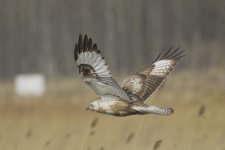
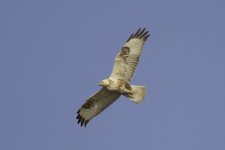

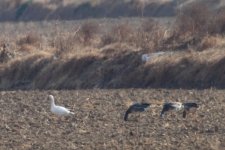
![IMG_5322_Snow%20and%20Bean%20Geese%20etc[2].jpg](/data/attachments/278/278924-9f5e0b3892dd16c40e8fecf9b3713506.jpg)
